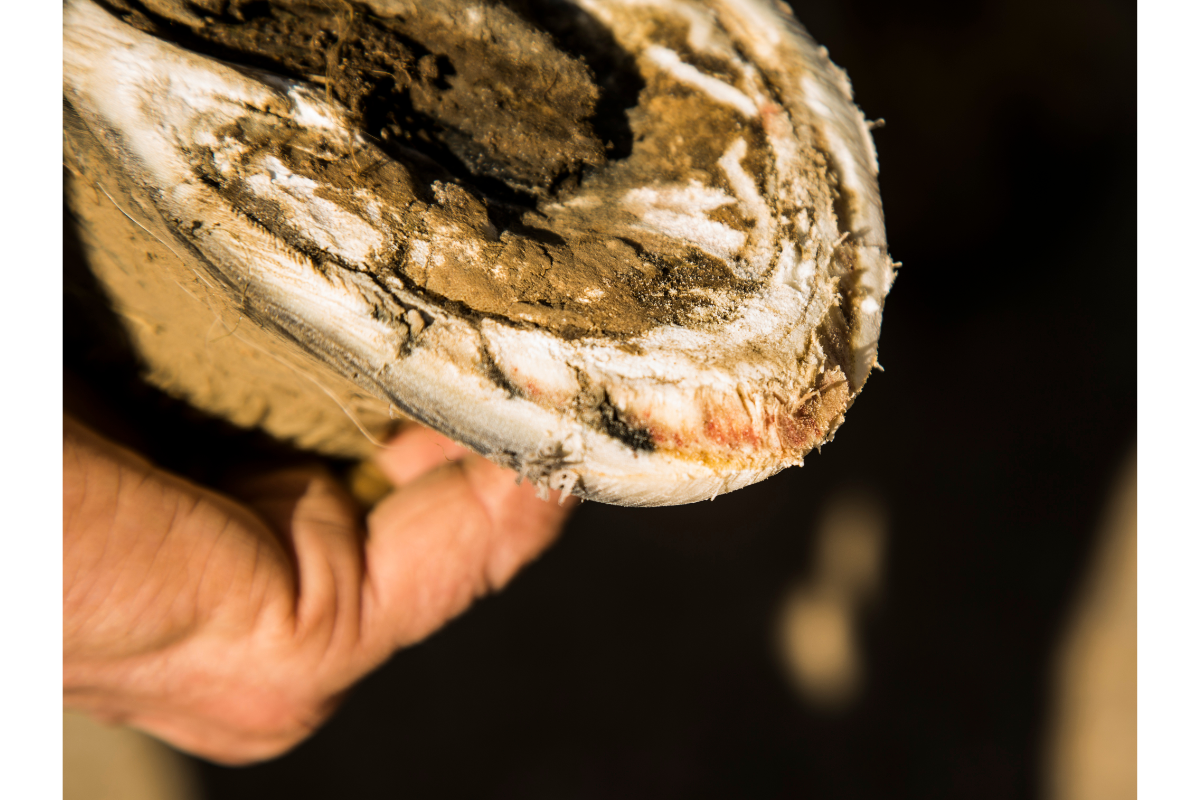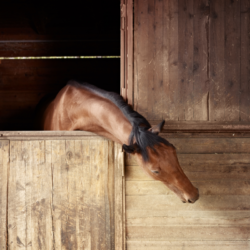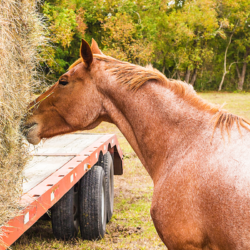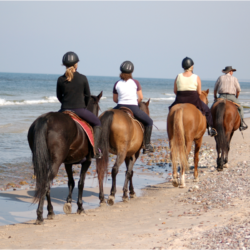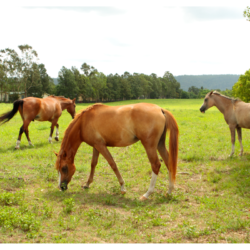Laminitis is a serious condition of equine hooves, often linked to other diseases. This condition, which can be fatal, requires immediate attention and appropriate care.
What causes this condition?
Foot problems are the main cause of lameness in older horses. Laminitis remains the most frequently diagnosed condition. A statistically significant association has been demonstrated between ageing and the risk of developing laminitis. Older horses are particularly vulnerable due to a number of factors:
- reduced keratin synthesis
- inadequate nutritional intake
- environmental factors,
- lack of foot maintenance,
- and the presence of a concomitant systemic disease.
Endocrinopathies such as pars intermedia pituitary dysfunction and equine metabolic syndrome are frequent causes of chronic laminitis in older horses.
Laminitis is congestion and inflammation of the equine foot. It is a medical emergency. Prompt treatment is essential to limit complications and disabling after-effects. The foot consists of the distal phalanx surrounded by two interlocking layers: the keraphyllum (outer layer) and the podophyllum (inner layer). These two layers, attached to each other, ensure adhesion between the internal structures of the foot and the hoof wall.
During laminitis, inflammation and disruption of the foot’s blood supply cause these lamellae to break down. This leads to a loss of cohesion between the distal phalanx and the dorsal wall of the foot.
What are the symptoms of laminitis?
Laminitis manifests itself through various symptoms, often localised to the two front feet, but it can also affect all four feet or just one.
Signs of acute laminitis: Clinical signs include inflammation and intense pain in the feet, especially when pinching. Horses adopt a characteristic analgesic posture. They camp their forelegs forward of the vertical and place their hindlegs underneath them. This relieves the pain by shifting the weight to the heels. Other symptoms include difficulty moving, cramped gaits, a reluctance to give foot and a horse that lies still. This last symptom can lead to complications such as myositis or colic.
Signs of chronic laminitis: This form prolongs the acute phase. The hoof may be deformed, with the formation of characteristic horizontal striae, a depression in the coronary bead and mild to moderate lameness. Affected horses may also show bumps on the front of the affected feet.
How is the condition diagnosed?
Diagnosis of laminitis is based mainly on observation of the clinical symptoms and additional tests. Probing the foot with probing forceps can reveal pincer tenderness.
A radiographic examination (front and side views) is crucial to confirm the suspicion of laminitis. It shows the relative position of the distal phalanx in relation to the hoof wall. It can also detect areas of detachment between the keraphyllum and the podophyllum. Radiography also helps to refine the prognosis by observing the collapse of the phalanx, which has a poor prognosis, and to monitor the progress of the disease in the case of chronic laminitis.
The phlebogram, although not widely used in the field, enables the vascular network of the foot to be visualised by means of an X-ray taken after injection of a contrast medium. This technique is useful for detecting vascular lesions in laminitis with compression of the third phalanx. However, it is less common because of the ease of clinical diagnosis.
What treatments are available?
Treatment of laminitis aims to control pain, reduce tissue damage, improve vascularisation of the foot, and prevent or limit rotation of the distal phalanx. It is crucial to treat the underlying cause of laminitis.
- Pain control: The use of non-steroidal anti-inflammatory drugs (NSAIDs) or aspirin is essential to relieve the horse’s pain. Continuous extended cryotherapy involves applying cold to the feet to combat inflammation. This technique should be started as soon as symptoms appear and continued 24 hours after they have disappeared.
- Management of acute laminitis: In the acute phase, it is not advisable to shoe or shoe the horse to avoid any mechanical stress. Heel support, through the use of heel pads, helps to reduce tension in the deep flexor tendon of the finger.
- Farriery care: Once laminitis has stabilised, farriery care is essential to improve the horse’s comfort. Curative trimming, the use of suitable shoes (M or heart-shaped shoes) and polyurethane protective plates can help support the distal phalanx and reduce pain.
What are the natural alternatives?
Phytotherapy is an effective complementary treatment for laminitis, especially in older horses suffering from chronic laminitis. It aims to control pain, restore podal vascular perfusion, treat the underlying cause and prevent tipping of the distal phalanx.
- Anti-inflammatory plants: Willow bark, meadowsweet flowering tops, devil’s claw secondary roots, turmeric rhizomes and nettle aerial parts are known for their anti-inflammatory properties.
- Circulation-stimulating plants: Red vine, ginkgo biloba and chrysantellum are useful for stimulating peripheral microcirculation, helping to treat laminitis.
- Endocrine support: chasteberry is used to treat endocrinopathies such as equine metabolic syndrome and pars intermedia pituitary dysfunction, often associated with chronic laminitis.
- Other plants: Stinging nettle and dandelion for their purifying properties, artichoke and milk thistle for their stimulating effect on the liver, and meadowsweet for its draining and pain-relieving properties.
- Gemmotherapy: walnut and rosemary can help control blood sugar levels.
Massaging the flexor and extensor muscles, using vasodilators and supplementing with biotin to encourage horn growth are also treatment options.
What can be done to prevent it?
To prevent laminitis, it is essential to manage endocrine disorders with the help of a vet. Horses predisposed to obesity should be fed a suitable low-calorie diet.
Preventive measures:
- Isolate the grain store to avoid accidents.
- Restrict access to pasture during critical periods (spring and autumn).
- Limit energy intake by favouring low-energy fodder.
- Regularly check the thickness of the soles of the feet and look out for warning signs (hot feet and digestive pulses).
In the event of excessive grain ingestion, gastric lavage should be carried out as quickly as possible. Managing the horse’s overweight and avoiding sudden grazing are also crucial. If hormonal disease is suspected, early detection and appropriate treatment can prevent laminitis.

